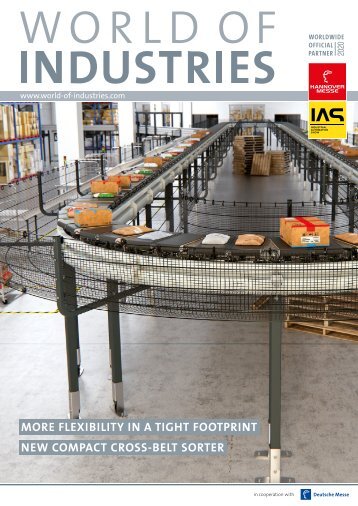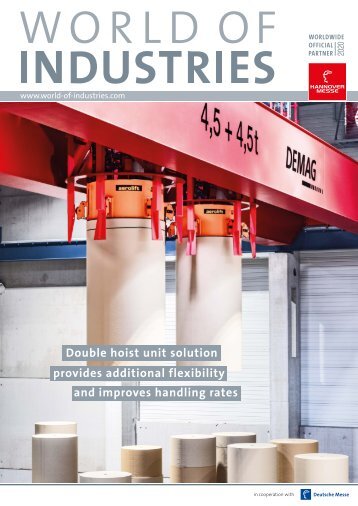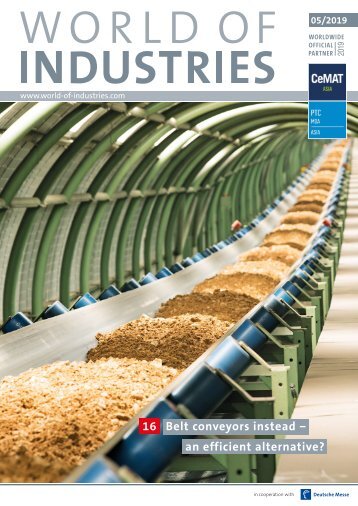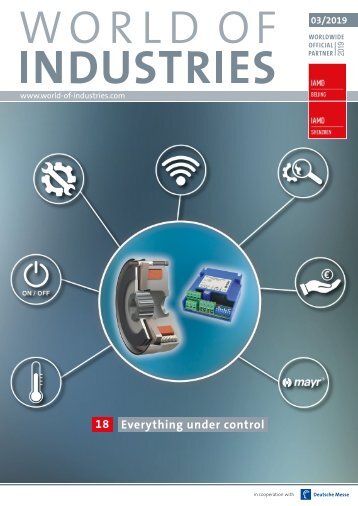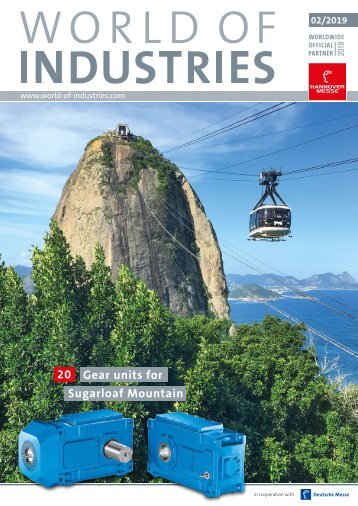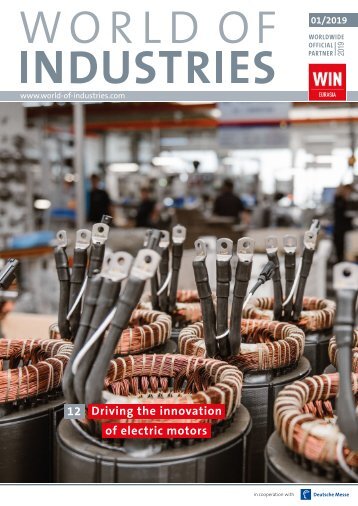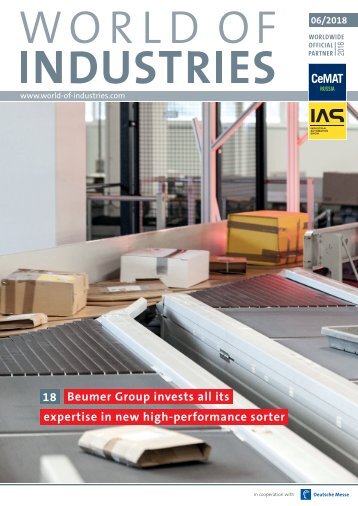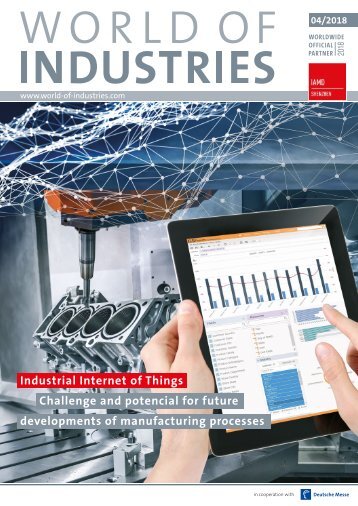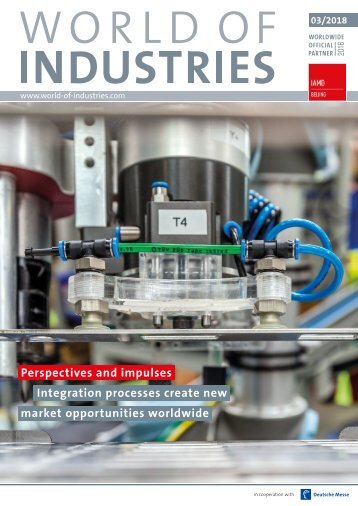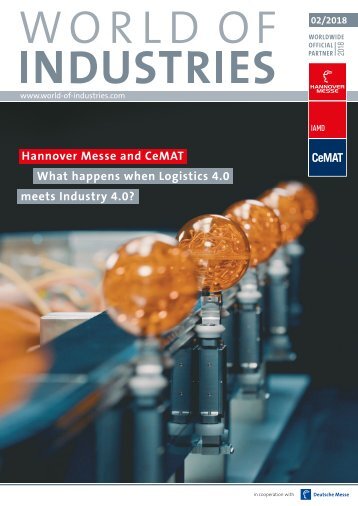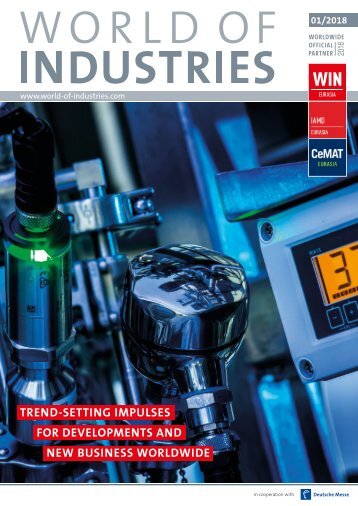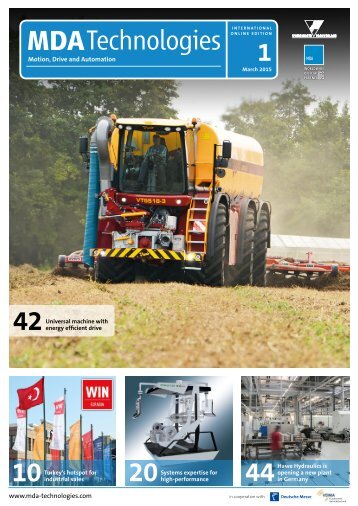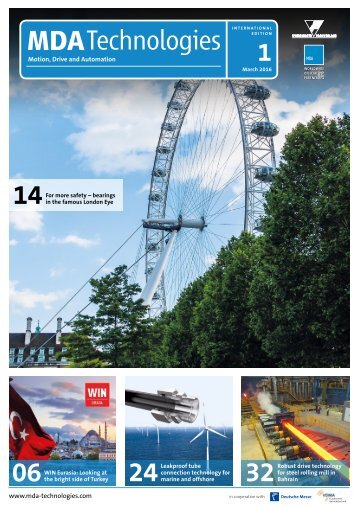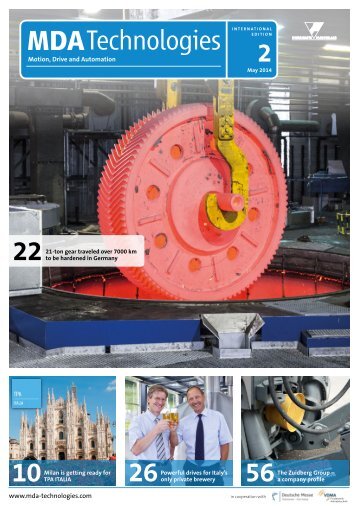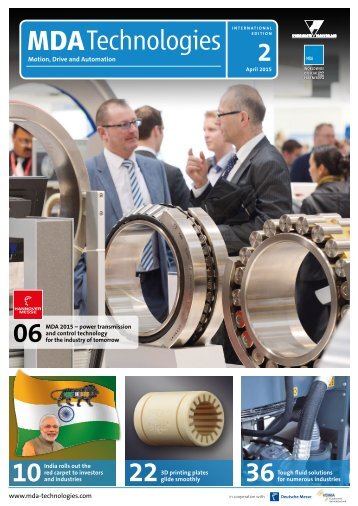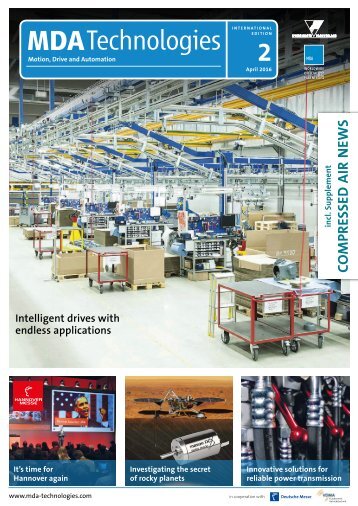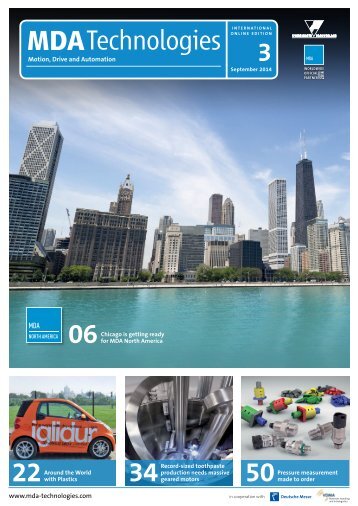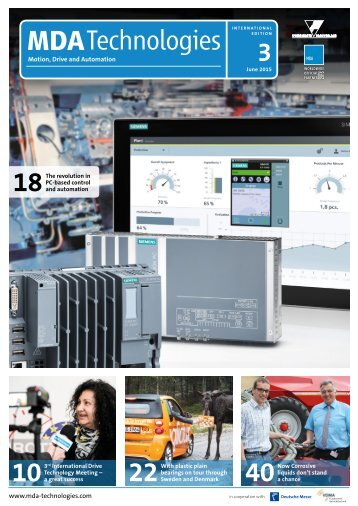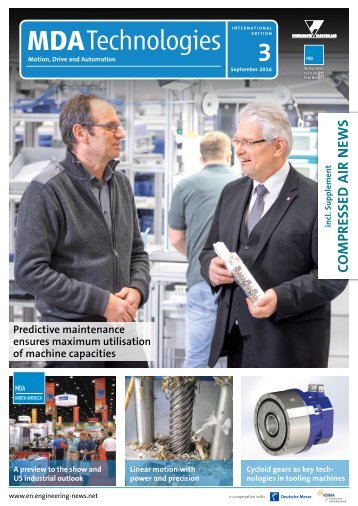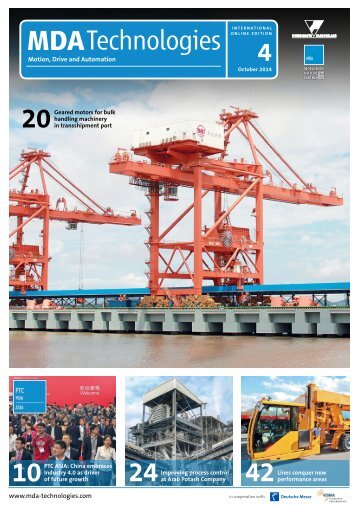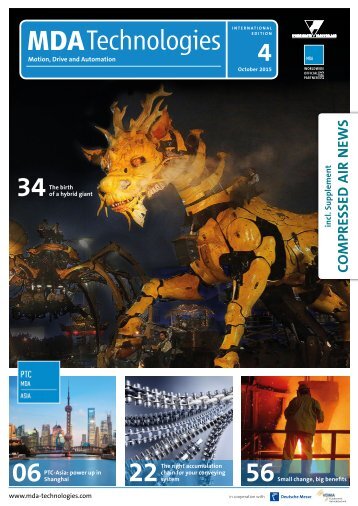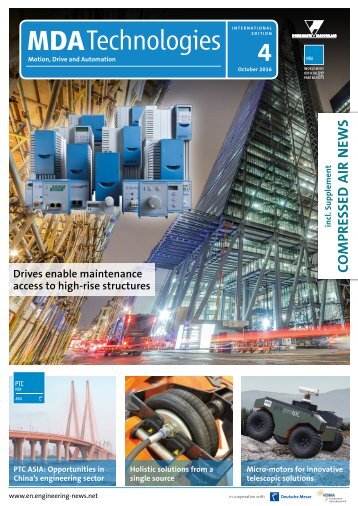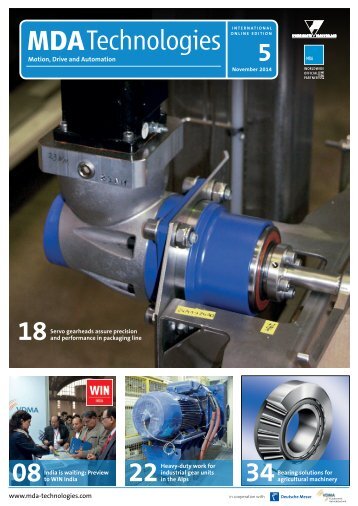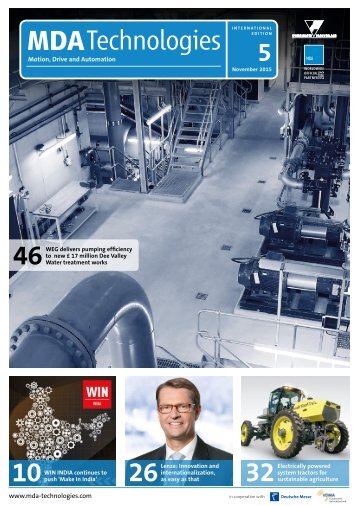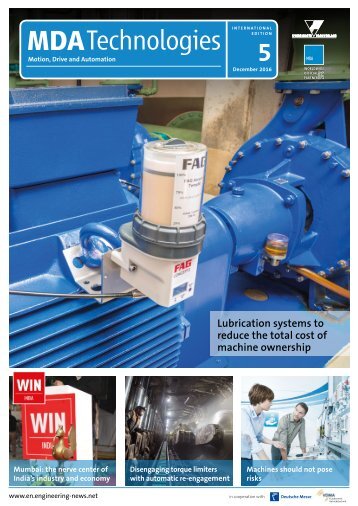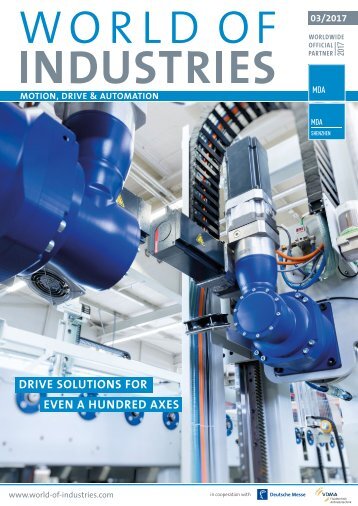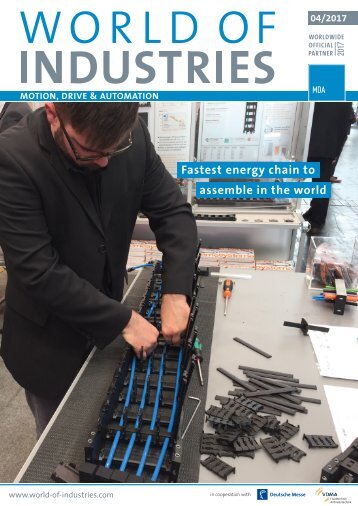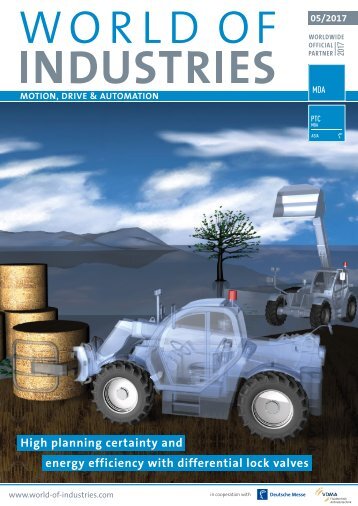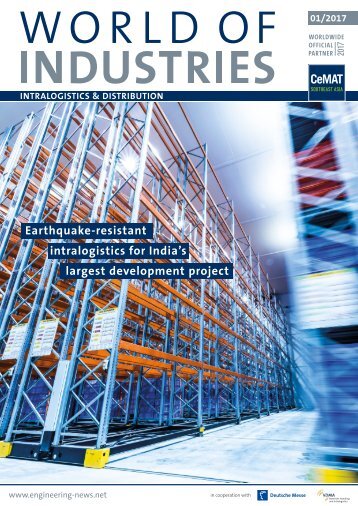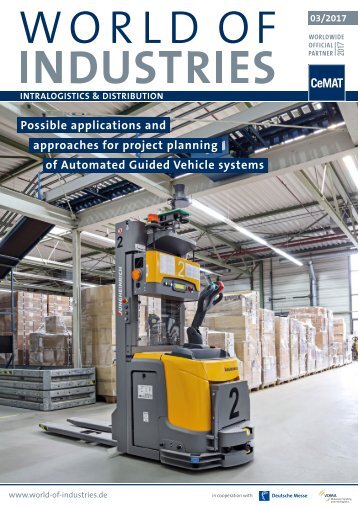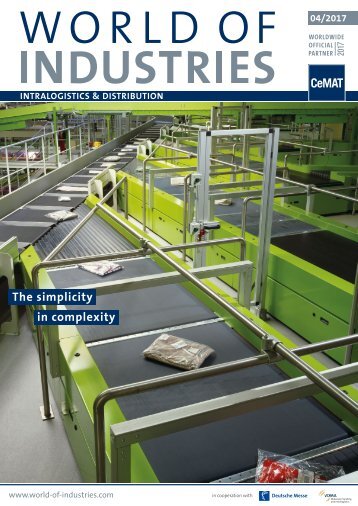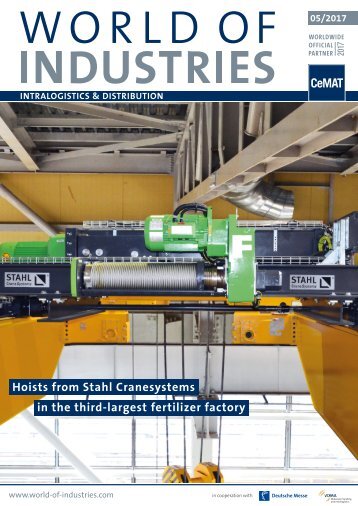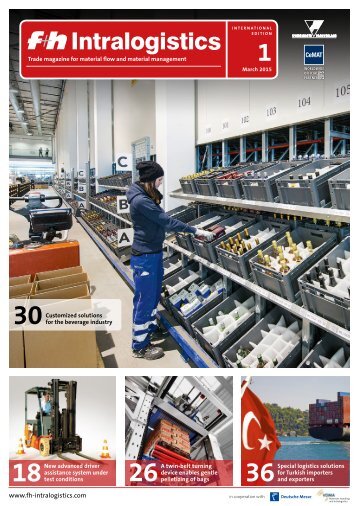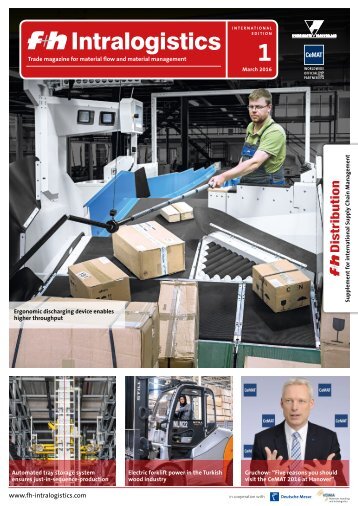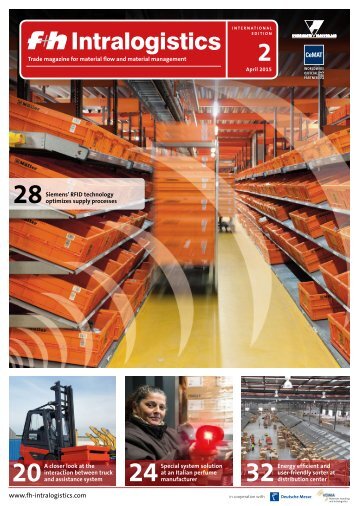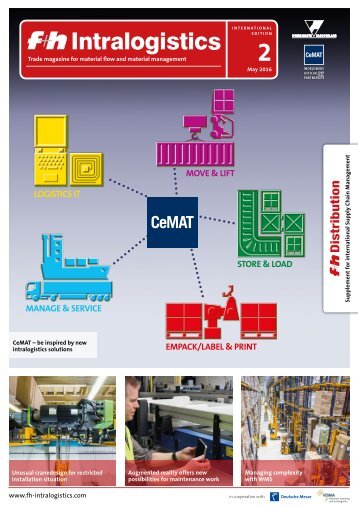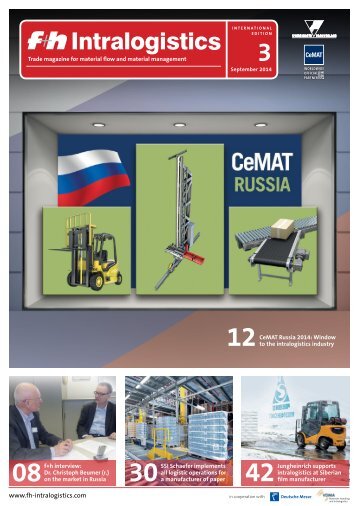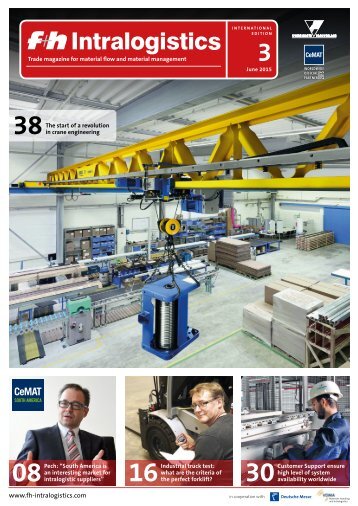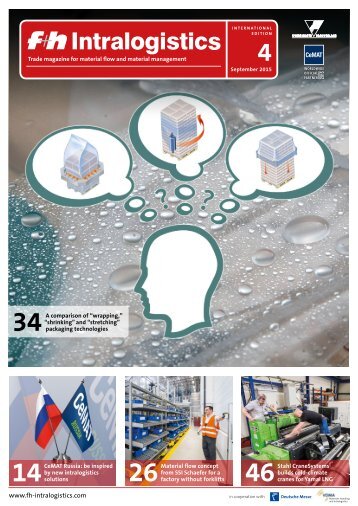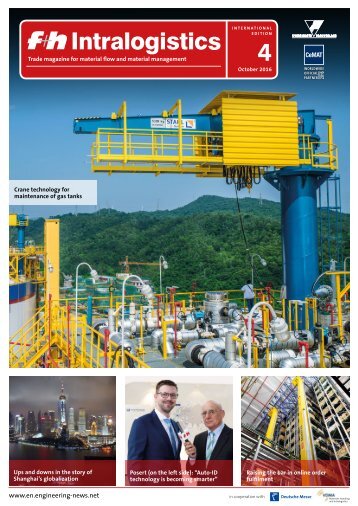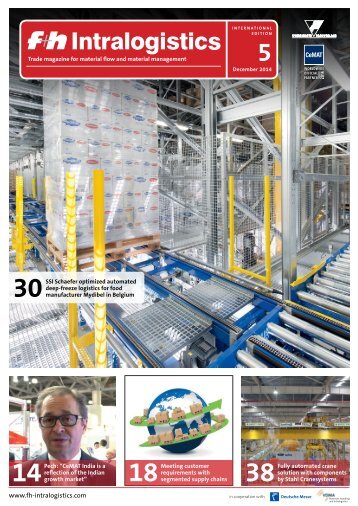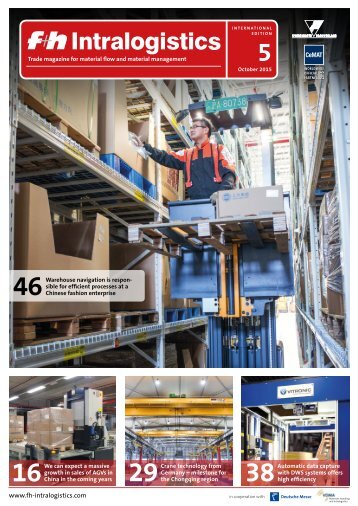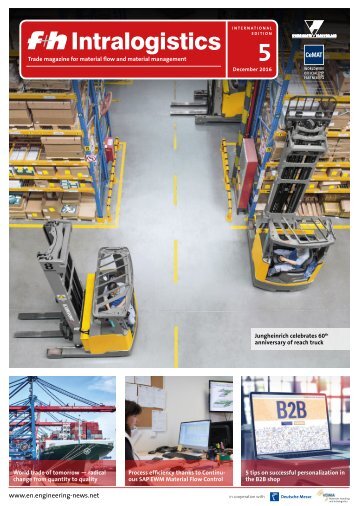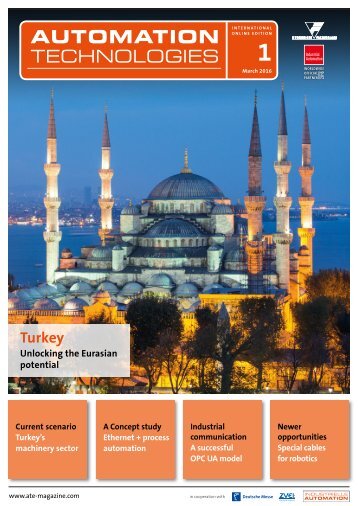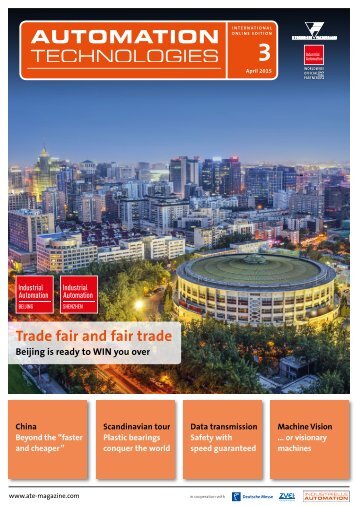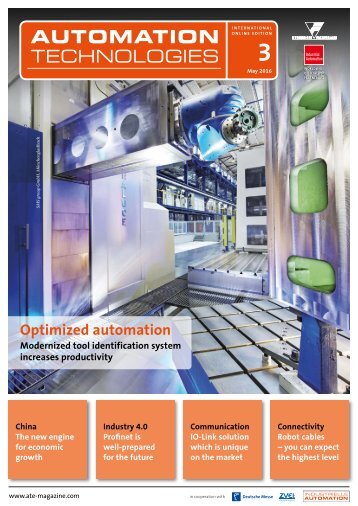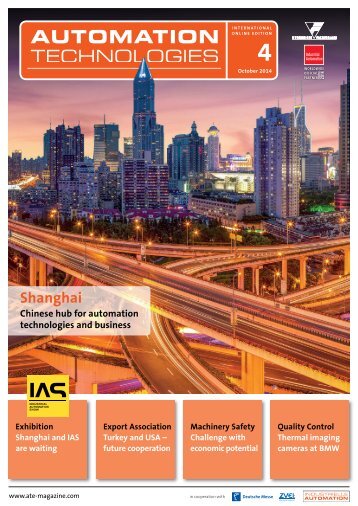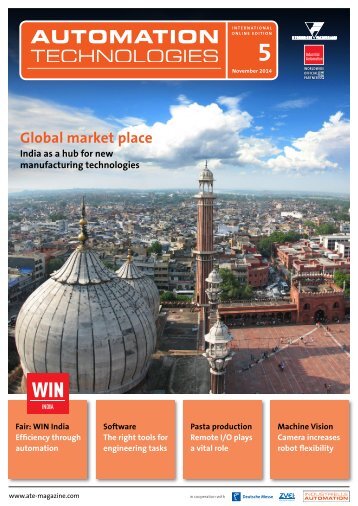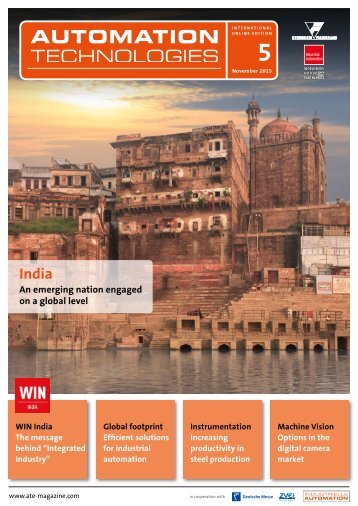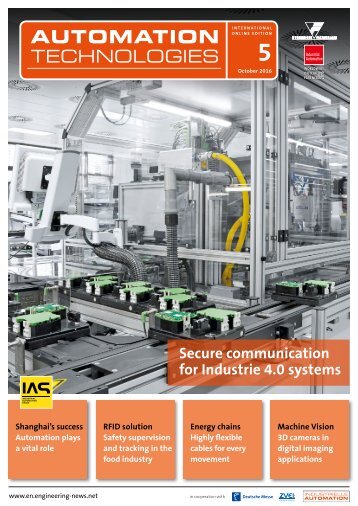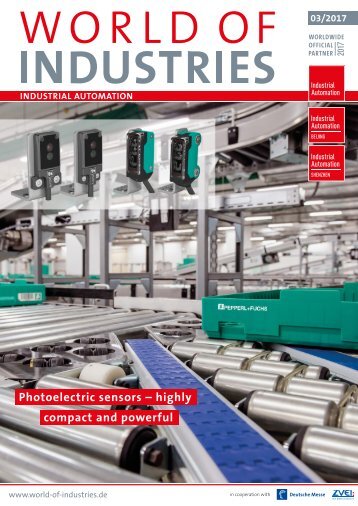f+h Intralogistics 1/2016
- Text
- Fuh
- Intralogistics
3D printing cartridge
3D printing cartridge manufacturers, deliver the 3D printing cartridges, collect old products and recycle them. Several logistics providers have expanded into the online fabbing market. The implications for logistics include a vastly reduced need for long-distance transportation of final and semi-final goods due to the localization of value chains. At the same time, logistics providers organize entire physical value chains. In 2050, the logistics industry consists of an online and offline segment. The offline segment integrates the transport of raw materials into manufacturing logistics and reverse logistics. The online segment ensures secure data transfer and secure data retail in online shops. Strong regional logistics capabilities and a high quality last-mile network become important success factors because of the decentralized organization of production. Scenario 4: Paralyzing protectionism The world in the year 2050 In this world, economic hardship combined with the rise of nationalism and protectionist barriers has reversed globalization. Resources are scarce, technological development is stagnating and economies are faltering. Global trade volumes are down after most countries have raised protectionist barriers. Trade suffers from a lack of investment in infrastructure development and maintenance. High energy prices and dramatic resource scarcity fuel international conflicts over resource deposits. Under these circumstances, there are no international efforts to reduce greenhouse gas emissions. Implications for the logistics industry The decline of world trade and the resulting regionalization of supply chains are major challenges for the logistics industry. The average transport distance has been shortened. Ocean freight becomes less important, while the significance of regional road and rail transport is on the rise. Shorter and less complex regional supply chains reduce the demand for elaborate and sophisticated logistics solutions. What many call a “devaluation of the logistics industry” results in fewer customized solutions and an increase in standardized services. Strong regional providers emerge, maintaining excellent connections to governments and public administrations. Governments view logistics as an industry of strategic importance. Relations between some blocs and countries are extremely strained, and logistics providers in bloc-free countries act as intermediaries in international trade brokerage. The growing complexity and length of the customs clearing process increase the demand for specialized customs brokerage and consulting services. Scenario 5: Global resilience – local adaptation The world in the year 2050 This is a world initially characterized by high levels of consumption thanks to cheap, automated production. However, accelerated climate change and the resulting increase in natural disasters is causing disruptions of lean production structures as well as repeated supply failures for all kinds of goods. Thus, the new economic paradigm is no longer about maximizing efficiency, but reducing vulnerability and creating robust, resilient structures. This radical move towards redundant systems of production and a change from global to regionalized supply chains allow the global economy to better weather troubling times. Implications for the logistics industry The security-conscious world in 2050, with its regionalized trade structures, relies on a logistics sector that ensures supply security as a top priority. High-performance backup infrastructure guarantees reliable transport even in unstable and hazardous times. However, such extensive backup systems are capital-intensive and conflict with the aim of carbon reduction. To counter this effect and find a balance between energy efficiency and supply chain resilience, sophisticated logistics planning is used to achieve high capacity utilization. Instead of complex just-in-time delivery processes, huge warehouse facilities located close to the manufacturer play a large role and are considered indispensable buffers. Disruptions and natural disasters occur more frequently in many parts of the world and providing fast relief operations is considered a high-priority as well as profitable business for logistics providers. The increased focus on long-lasting products contributes to demand growth for the service and maintenance of domestic technologies. Thus, logistics providers combine the operation of the last mile with offering technical services on the spot, such as the collection of used products for the purpose of recycling scarce resources. Photos: Deutsche Post DHL www.dpdhl.com FUTURE OF LOGISTICS MULTIMEDIA CONTENT With its release of the study of the future, “Delivering Tomorrow: Logistics 2050”, Deutsche Post DHL is taking a far-reaching look into the future of trade, business and society. f+h Distribution 1/2016
SOME THINK DELIVERY ERRORS ARE INEVITABLE. WE THINK DIFFERENT. Running an efficient distribution centre makes a big difference to profitability and customer satisfaction. That’s why many leading brands put sortation systems from BEUMER and Crisplant at the heart of their supply chain. Through operational insight and analysis, BEUMER Group is able to deliver complete automated material handling systems that fit seamlessly into your process. Offering exceptional speed, capacity and accuracy, our technology makes a difference to your customers, your brand and your bottom line. For more information, visit www.beumergroup.com
- Page 1 and 2: Intralogistics Trade magazine for m
- Page 3: TABLE OF CONTENT News and informati
- Page 6 and 7: WORLDWIDE NEWS Vanderlande increase
- Page 8 and 9: Welcome to Eurasia’s leading indu
- Page 10 and 11: COMMENT FROM THE PUBLISHER f+h: The
- Page 12 and 13: For BLG, Turkey means growth GUEST
- Page 14 and 15: Deutsche Post DHL published a scena
- Page 18 and 19: Supply chain increases the availabi
- Page 20 and 21: 02 Following restructuring the supp
- Page 22 and 23: and monitoring of the supply chain
- Page 24 and 25: The ten most highly performing sea
- Page 26 and 27: Ranking 1 Rotterdam (Holland) An ov
- Page 28 and 29: Republic of Turkey Area: 302,704 sq
- Page 30 and 31: Ergonomic discharging device from B
- Page 32 and 33: SSI Schaefer storage system ensures
- Page 34 and 35: An optimal cooperation The added va
- Page 36 and 37: Field test of Jungheinrich TFG 425
- Page 38 and 39: 04 The slim steering column (with t
- Page 40 and 41: INDUSTRIAL TRUCKS Clean performance
- Page 42 and 43: 5 Reasons why you should visit CeMA
Inappropriate
Loading...
Mail this publication
Loading...
Embed
Loading...


